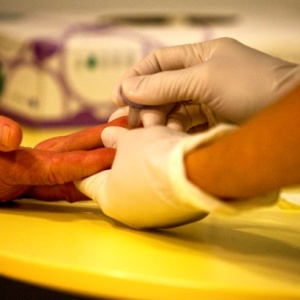
This paper finds that consumption of high-fat yoghurt and cheese are linked to reduced risks of developing type 2 diabetes – reducing these risks by as much as a fifth. High meat consumption, on the other hand, is linked to a higher risk, regardless of the fat content of the meat. These results are in line with previous studies of eating habits that indicated a link between high consumption of dairy products and a reduced risk of type 2 diabetes.
Abstract
Background: Dietary fats could affect glucose metabolism and obesity development and, thereby, may have a crucial role in the cause of type 2 diabetes (T2D). Studies indicated that replacing saturated with unsaturated fats might be favorable, and plant foods might be a better choice than animal foods. Nevertheless, epidemiologic studies suggested that dairy foods are protective.
Objective: We hypothesized that, by examining dietary fat and its food sources classified according to fat type and fat content, some clarification regarding the role of dietary fat in T2D incidence could be provided.
Design: A total of 26,930 individuals (61% women), aged 45–74 y, from the Malmö Diet and Cancer cohort were included in the study. Dietary data were collected by using a modified diet-history method. During 14 y of follow-up, 2860 incident T2D cases were identified.
Results: Total intake of high-fat dairy products (regular-fat alternatives) was inversely associated with incident T2D (HR for highest compared with lowest quintiles: 0.77; 95% CI: 0.68, 0.87; P-trend < 0.001). Most robust inverse associations were seen for intakes of cream and high-fat fermented milk (P-trend < 0.01) and for cheese in women (P-trend = 0.02). High intake of low-fat dairy products was associated with increased risk, but this association disappeared when low- and high-fat dairy were mutually adjusted (P-trend = 0.18). Intakes of both high-fat meat (P-trend = 0.04) and low-fat meat (P-trend < 0.001) were associated with increased risk. Finally, we did not observe significant association between total dietary fat content and T2D (P-trend = 0.24), but intakes of saturated fatty acids with 4–10 carbons, lauric acid (12:0), and myristic acid (14:0) were associated with decreased risk (P-trend < 0.01).
Conclusions: Decreased T2D risk at high intake of high- but not of low-fat dairy products suggests that dairy fat partly could have contributed to previously observed protective associations between dairy intake and T2D. Meat intake was associated with increased risk independently of the fat content.
Citation
Ericson, U., Hellstrand, S., Brunkwall, L., Schulz, C-A., Sonestedt, E., Wallström, P., Gullberg, B., Wirfält, E., Orho-Melander, M., 2015, Food sources of fat may clarify the inconsistent role of dietary fat intake for incidence of type 2 diabetes. American Journal of Clinical Nutrition, DOI: 10.3945/ajcn.114.103010
Read the full paper here and see further coverage from Science Daily here.







Post a new comment »